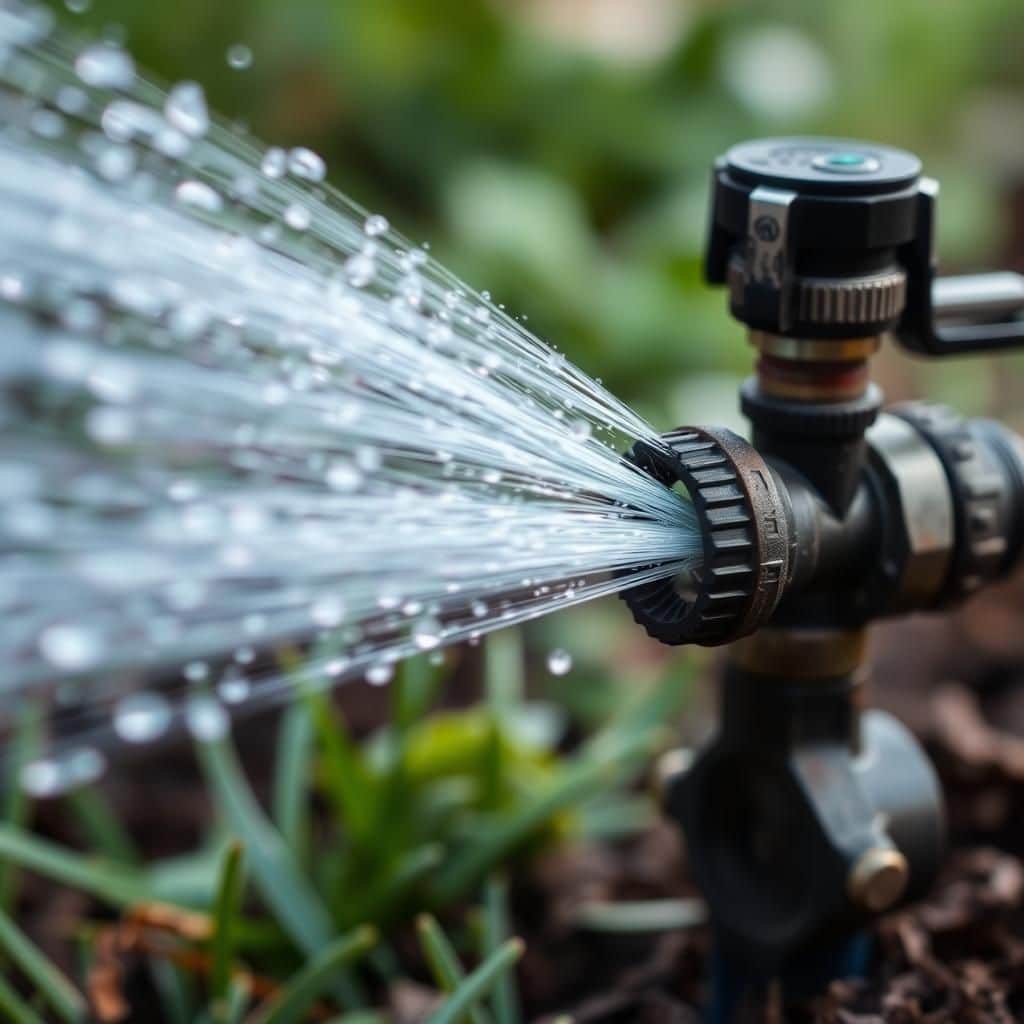Ultimate Guide: How to Unclog Irrigation Lines? Tips and Tricks for Efficient Water Flow

Efficient irrigation is essential for maintaining vibrant gardens and lush landscapes. However, clogged irrigation lines can disrupt water flow, leading to dry patches and unhealthy plants. This ultimate guide aims to equip you with practical tips and tricks to effectively unclog your irrigation lines, ensuring optimal water distribution. From identifying common blockages to implementing preventative maintenance strategies, we’ll cover everything you need to know to keep your irrigation system running smoothly. Whether you’re a seasoned gardener or a novice, our comprehensive approach will help you restore efficiency to your watering system, promoting a thriving outdoor space.
How to Unclog Irrigation Lines
To successfully unclog irrigation lines, it's essential to identify the cause of the blockage, which often includes debris, mineral buildup, or plant roots. Start by turning off the water supply to the irrigation system. Next, disconnect the affected segment of the line, and carefully inspect it for visible clogs. Use tools like a plumber's snake or a hydro jet to clear serious obstructions. Additionally, flushing the lines with water can help remove smaller particles. Regular maintenance, such as installing filters and performing seasonal inspections, can prevent future clogs and ensure the efficient functioning of your irrigation system.
Identifying Common Causes of Clogs
To effectively unclog irrigation lines, it is crucial to understand the common causes of clogs. These usually include dirt, sand, or sediment that accumulates over time, as well as organic matter such as roots and leaves. Additionally, chemical deposits from fertilizers can crystallize within the tubes, obstructing water flow. Identifying these issues early allows for timely interventions before the clog becomes more severe, ensuring the longevity and efficiency of your irrigation system.
Tools Required for Unclogging
Having the right tools on hand can make the unclogging process much smoother. Essential tools include a plumber's snake for breaking up stubborn clogs, a hydro jet for powerful water pressure, and standard garden tools like shovels and trowels for root removal. Consider acquiring a camera attachment for a plumbing snake to visually inspect the inside of the pipes. Furthermore, you may find it helpful to have a hose for flushing out debris after a clog is cleared. Using the appropriate tools not only saves time but also minimizes potential damage to your irrigation system.
Steps to Clear Clogged Irrigation Lines
To clear clogged irrigation lines effectively, follow these steps: First, turn off the water supply and disconnect the clogged segment of the line. Next, visually inspect the area for any large obstructions. If no apparent blockage is found, insert a plumber's snake or a high-pressure water jet into the line to break up any hidden clogs. After clearing the obstruction, flush the line thoroughly with water to remove any remaining debris. Finally, reconnect the line and turn the water supply back on, monitoring its flow to ensure the clog has been completely addressed.
Preventive Measures to Avoid Future Clogs
Implementing preventive measures is key to maintaining clear irrigation lines. Regularly inspect your irrigation system for any signs of blockages and clean or replace filters as needed. Installing a gravel barrier at the base of your irrigation lines can help reduce soil entering the system. Additionally, consider using drainage tiles to minimize sediment buildup in drainage areas. Moreover, seasonal maintenance, including flushing the lines, will help ensure that your system remains unclogged and functions optimally throughout the irrigation season.
When to Seek Professional Help
While many clogs can be managed on your own, there are circumstances where professional help is advisable. If you encounter persistent clogs despite repeated efforts or if you notice signs of severe damage to the pipes, such as leaks or cracking, it is best to consult an irrigation specialist. Professionals have access to advanced tools and techniques that can accurately diagnose and rectify complex issues without damaging your system. Investing in professional-grade maintenance can save you time and money in the long run, ensuring your landscape remains healthy and well-irrigated.
| Cause | Tool | Prevention |
|---|---|---|
| Debris | Plumber's Snake | Regular Inspections |
| Mineral Buildup | Hydro Jet | Flushing Lines |
| Plant Roots | Hand Tools | Gravel Barriers |
| Sediment | Drainage Tiles | Seasonal Maintenance |
| Chemical Deposits | Water Flush | Filter Replacement |
How to clear blocked irrigation lines?

To clear blocked irrigation lines effectively, follow these detailed steps to ensure the system operates smoothly. Blockages can occur due to various reasons such as debris, mineral build-up, or plant roots invading the lines. Here’s how to address the issue:
1. Identify the Blockage: Start by observing the areas of your irrigation system that show signs of poor water distribution or non-functioning emitters.
See also:
2. Disconnect the System: Before you begin any clearing, turn off the water supply and disconnect the affected section of the irrigation line.
3. Check for Visible Debris: Inspect the line and remove any visible debris or obstructions that you can see.
4. Use Water Pressure: Reconnect the line (if safe) and use a high-pressure water source to blow out the blockage.
5. Chemical Cleaners: For mineral build-up, consider using safe chemical treatments designed to dissolve blockages. Always follow the manufacturer’s instructions.
6. Mechanical Solutions: If blockages persist, use a plumber's snake or a similar tool to physically remove the obstruction from the line.
Regular Maintenance of Irrigation Systems
Maintaining your irrigation system regularly can help prevent blockages:
- Inspection: Regularly check your lines for leaks, cracks, and signs of blockages.
- Cleaning: Flush the system with water to remove any potential debris accumulation before each growing season.
- Filter Replacement: Change or clean filters according to the manufacturer’s recommendations.
Identifying Common Blockage Causes
Understanding what typically causes blockages can help you take preventive measures:
- Debris: Leaves, dirt, and other organic materials can easily clog lines.
- Mineral Buildup: Hard water can lead to the accumulation of minerals inside the lines.
- Root Intrusion: Tree and plant roots can grow into irrigation lines, leading to blockages.
Tools and Materials Needed
Having the right tools can streamline the process of clearing blockages:
- High-pressure Hose: Essential for flushing out debris.
- Plumber's Snake: Useful for removing deeper blockages.
- Chemical Cleaners: Select appropriate treatments that will safely dissolve specific types of blockages.
When to Call a Professional
There are certain scenarios where professional help may be necessary:
- Severe Blockages: If you've tried everything and the problem persists, it's time to call a pro.
- Complex Systems: In systems with a lot of moving parts, a professional will ensure a thorough check-up.
- Damage Assessment: Professionals can identify any hidden damage that may contribute to recurring blockages.
Post-Clearing Checks and Adjustments
Once the lines are cleared, perform these checks:
See also:
- Test the System: Run the irrigation system to ensure all lines are functioning correctly.
- Inspect Emitter Distribution: Check that all areas are receiving the right amount of water.
- Monitor for Recurrences: Observe the system closely for any signs of blockage reappearing.
How to get air out of irrigation lines?

To effectively get air out of irrigation lines, there are several methods and considerations that need to be taken into account to ensure that your irrigation system operates efficiently. Air trapped in the lines can lead to uneven water distribution and can affect the overall performance of the system.
Understanding Air Bubbles in Irrigation Lines
Air bubbles can accumulate in irrigation lines for several reasons, including installing the system improperly, using high elevation zones, or sudden changes in pressure. Understanding how these air pockets form helps in identifying effective removal methods. Key aspects include:
- Water Pressure Changes: Fluctuations in pressure can create voids that lead to air accumulation.
- System Design: Incorrect design or placement of components can trap air.
- Temperature Variations: Hot temperatures can cause water to vaporize and create bubbles.
Using Automatic Air Vents
Automatic air vents are devices that you can install in various points of your irrigation system to help remove trapped air automatically. These vents typically function when pressure changes within the system, allowing air to escape. The advantages of using automatic air vents include:
- Continuous Operation: They continuously allow air to escape without manual intervention.
- Placement Flexibility: Can be installed at high points of the system to maximize efficiency.
- Reduced Maintenance: Lowers the need for frequent manual air removal efforts.
Manual Bleeding of Irrigation Lines
In cases where air accumulation is significant, manual bleeding can be an efficient way to remove air. This involves opening bleed valves or using drain valves to release the air from the system. Here’s how to effectively perform manual bleeding:
- Locate Bleed Points: Identify the highest points in the irrigation system where air is likely to accumulate.
- Open Valves Gradually: Slowly open the bleed valves to allow air to escape without causing sudden pressure changes.
- Observe Water Flow: Close the valves once you see steady water flow without air bubbles.
Using a Pump to Remove Air
In some irrigation systems, particularly larger or more complex ones, using a pump can aid in efficiently removing air. This method involves actively pumping water through the system to push out trapped air. Consider the following points:
- Pump Selection: Choose a pump that can generate the necessary pressure to dislodge air pockets effectively.
- Run the System: Turn on the irrigation system and monitor for any air release.
- Continuous Operation: Keep the pump running until all air is expelled and water flows evenly.
Regular Maintenance Checks
To prevent air buildup in the future, regular maintenance is essential. Routine inspections can help identify potential issues that may allow air to enter the system. Key maintenance practices include:
- System Inspection: Regularly check for leaks or damages that may lead to air intrusion.
- Pressure Monitoring: Keep an eye on system pressure to detect abnormalities early.
- Cleaning Filters: Ensure filters are clean to prevent water flow interruptions that can trap air.
Questions from Our Readers
How can I identify a clog in my irrigation lines?
To identify a clog in your irrigation lines, check for decreased water flow or inconsistent irrigation in your garden. You may also notice wet patches in some areas while other areas remain dry, indicating that water is not reaching all parts of your system effectively. Also, inspect for any visible signs of blockage near the emitters or at points where the lines connect.
What tools do I need to unclog irrigation lines?
To unclog irrigation lines effectively, you'll need some basic tools such as a pair of gloves, a bucket for collecting debris, a hose, and perhaps a backflush valve if you want to reverse the flow to dislodge clogs. Additionally, considering a cleaning brush can be helpful for physical blockages, especially around emitters and filters.
How do I clean clogged emitters in my irrigation system?
To clean clogged emitters, first, remove them from the line and soak them in a solution of water and vinegar or use a fine brush to clean any debris. Rinse thoroughly to ensure all particles are gone, then replace the emitter back into the line. Regular maintenance of your system will help prevent future clogs from developing.
See also:
What preventative measures can I take to avoid clogs in irrigation lines?
To prevent clogs in your irrigation lines, consider installing filters at the water source, regularly flushing the system, and using screened emitters. Additionally, check your water quality to reduce the amount of sediment entering the system, and schedule periodic inspections to catch potential issues before they escalate.

If you want to read more articles like Ultimate Guide: How to Unclog Irrigation Lines? Tips and Tricks for Efficient Water Flow, we recommend you check out our Irrigation category.
Leave a Reply
Related Articles